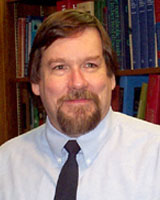W. Gray Jerome, III, PhD
More Information
Atherosclerosis, Lipid, Cholesterol, Macrophage
Research Information
Research in the laboratory is focused on vascular biology and how changes in the vasculature can affect heart disease, stroke, and cancer. The studies correlate microscopy and biochemistry evidence to determine what changes occur and how these changes affect the disease process. Currently, three interrelated studies are ongoing.
In the first, we are trying to learn why in atherosclerosis the lysosomes of macrophages and smooth muscle cells in the artery wall become bloated with cholesterol. To do this, we use cultured macrophages and look at the uptake and processing of cholesterol. The cholesterol is delivered to the cells within modified lipoproteins. This is similar to what occurs in vivo. We compare quantitative microscopic observations on the uptake and fate of the lipoproteins with measures of key biochemical pathways in cholesterol metabolism. In this way we are beginning to dissect why lysosomes cannot clear their cholesterol load. To relate these tissue culture experiments to the disease process, we also compare the appearance of these tissue culture cells to that exhibited by cells during various stages of atherosclerosis. This is also allowing us to investigate the effect this bloating has on progression of the disease. Among our findings, we have shown that lysosomal cholesterol accumulation occurs in two stages. In the initial stage, cholesteryl esters delivered by lipoproteins are broken down in th lysosome but the resulting unesterified cholesterol cannot escape the lysosome. In later stages, and perhaps related to the free cholesterol accumulation, hydrolysis of the cholesteryl esters is inhibited. This produces lysosomes rich in both free and esterified cholesterol.
In the second set of studies, we are exploring how triglycerides can alter intracellular cholesterol metabolism. We have found that triglycerides significantly increase the rate of cholesterol metabolism and cellular clearance of cholesterol. We are now trying to define the mechanisms by which this occurs.
In a new line of investigation in the laboratory, we are investigating how inhibition of cholesterol use can effect cell proliferation. Under conditions where cholesterol is scarce, cell proliferation, such as that seen in tumors, is slowed. The cell can acquire cholesterol exogenously or synthesize it internally. Each pool of cholesterol appears to have a slight different trafficking mechanism within the cells. It is still not clear whether an inhibition of use of one pool can be compensated by use of cholesterol from the other pool. Cholesterol restriction is a potential means of slowing some tumor growth. However, to fully understand the potential, much more knowledge of cholesterol trafficking and utilization within different cell types is required.

